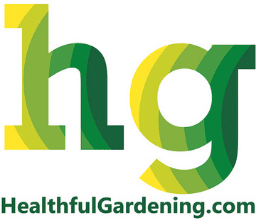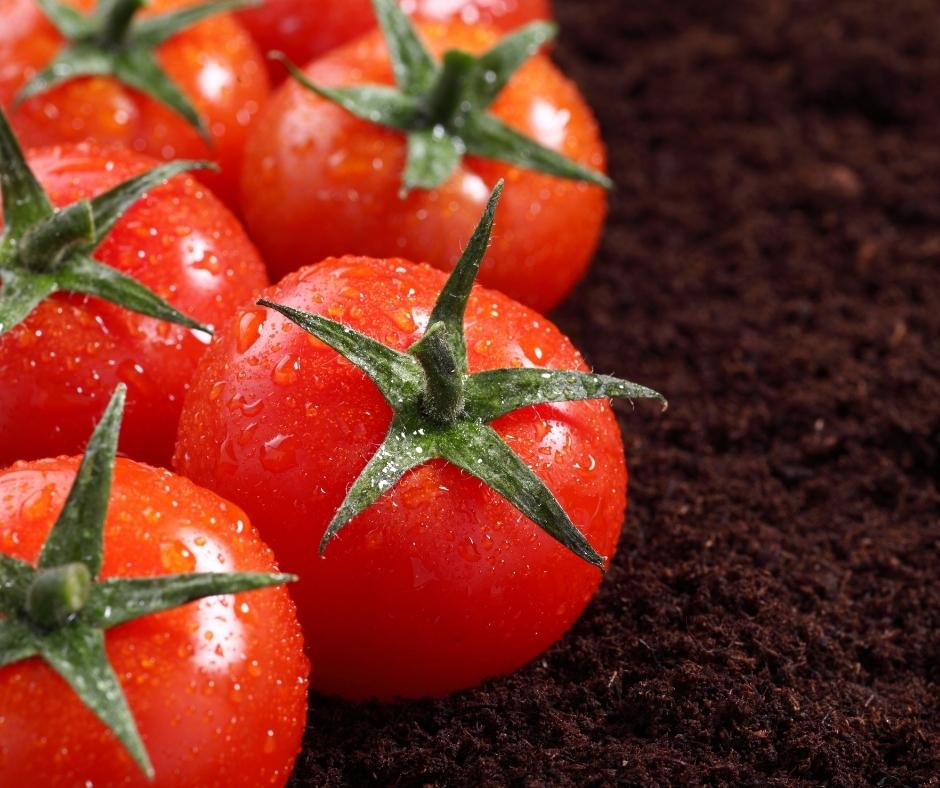
Tomatoes thrive in a variety of soils, with the exception of heavy clayey soils that significantly limit root development. However, the flavor of the fruit varies greatly depending on the soil you have planted it in and what you are feeding it. So, to produce the sweetest and most delicious tomatoes, you must plant them in the proper type of soil.
In containers, the best soil for tomatoes is a loose soil such as sandy loam, which is well-drained yet moisture-retaining, packed full of organic matter, nutrients, a greater amount of phosphorus and potassium, and a slightly acidic pH level of 6 to 6.8.
1. In a container, how much soil does a tomato need?
You’ll need at least 5 gallons (trade gallon) soil-filled containers, but I recommend using 10 gallons. Because tomato roots grow out considerably deep in a big container, it is preferable to use a bigger container for tomatoes.
2. What Is the Ideal Depth of Soil for Tomatoes in Containers?
Tomato roots are shallow; they expand out before they descend. A tomato plant’s core root system is within the first foot of earth. Tomatoes can be grown in containers if you have a soil depth of 8-12 inches. Before transplanting the tomatoes, loosen the dirt with a trowel to an depth of 8-12 inches.
PRO TIP
Planting young tomato plants in pots or containers necessitates planting them at least three to four inches deep. The plant’s stem will extend roots from the bottom of the soil and make it stronger.
3. What is the Best pH of Soil for Tomatoes?
A pH of 5.5, for example, means that the soil is neutral (neither acidic nor alkaline). A 7 indicates an acidity level under 7 and anything above is alkaline. The optimum pH for tomatoes is 6.0 to 6.8, which is close to neutral or slightly acidic.
Why is the pH level important for Tomatoes?
The amount of nutrients supplied to the tomato plants is determined by the pH level of the soil. Because the pH affects how fast nutrients are absorbed, it’s critical to maintain a proper pH balance.
Should you check the soil’s pH before planting Tomatoes?
Yes, I would recommend testing the pH level before transplanting your tomatoes. Amazon has a great selection of inexpensive pH meters. The Kelway pH Meter is a wonderful Japanese pH meter that will last a lifetime if you’re looking for a higher-end option. pH meters are quite simple to use: simply dip it in the soil and wait for the readings to appear.
How soil pH can be altered or raised for tomatoes?
What if the soil pH is outside of a narrow range, such as 6.0 to 6.8? Don’t worry; you may adjust the soil pH so it falls within or approaches, or even comes close to, the suggested range.
- If the soil’s pH is too low, add dolomite lime to raise it.
- If the soil’s pH is above 7.0, it is too alkaline; add sulfur or fertilizers that include ammonium sulfate to make it more neutral or slightly acidic.
PRO TIP
When adding anything to the soil to alter its pH, make sure it’s thoroughly mixed in and moistened with distilled water before letting it sit for 5 minutes to soak in.
4. What is the Best Soil for Tomatoes in Container?
A loose soil that can retain water and prevent the plants from drying out, has a lot of potassium and phosphorus, and is close to neutral in pH is the greatest soil for tomatoes in pots or containers.
PRO TIP
Tomatoes obtain their taste from the soil in which they are grown, so be sure to put your tomatoes in a nutrient-dense, disease-free environment.
Soil Type: Tomatoes can be grown in a wide range of soils, with the exception of hard clayey soil, which stifles root development. Tomato plants grow best in loose soil, which promotes healthy root development.
pH level: The optimum pH for tomatoes is 6.0 to 6.8. Tomatoes can survive at pH levels as low as 5.5 and as high as 7.5, albeit with reduced vigor and effectiveness.
Moisture Level: Tomatoes require a constant supply of water and cannot grow on completely dry soil. However, tomato roots do not like to sit in waterlogged soil either. The soil should be well-drained so that it is moist but not soggy. Tomatoes thrive on a mix of soils containing coco peat, peat moss, or perlite.
Food: Tomatoes are voracious eaters! They require a lot of nutrients, and tomatoes grown in a soil rich in phosphorus and potassium thrive. Furthermore, having an adequate quantity of calcium on your tomato plants will help prevent blossom end rot. Make sure to feed your tomato plants all year round.
You have two options for preparing your soil for tomatoes:
- Make your own soil at home.
- Purchase pre-mixed potting soil
Let’s get this party started!
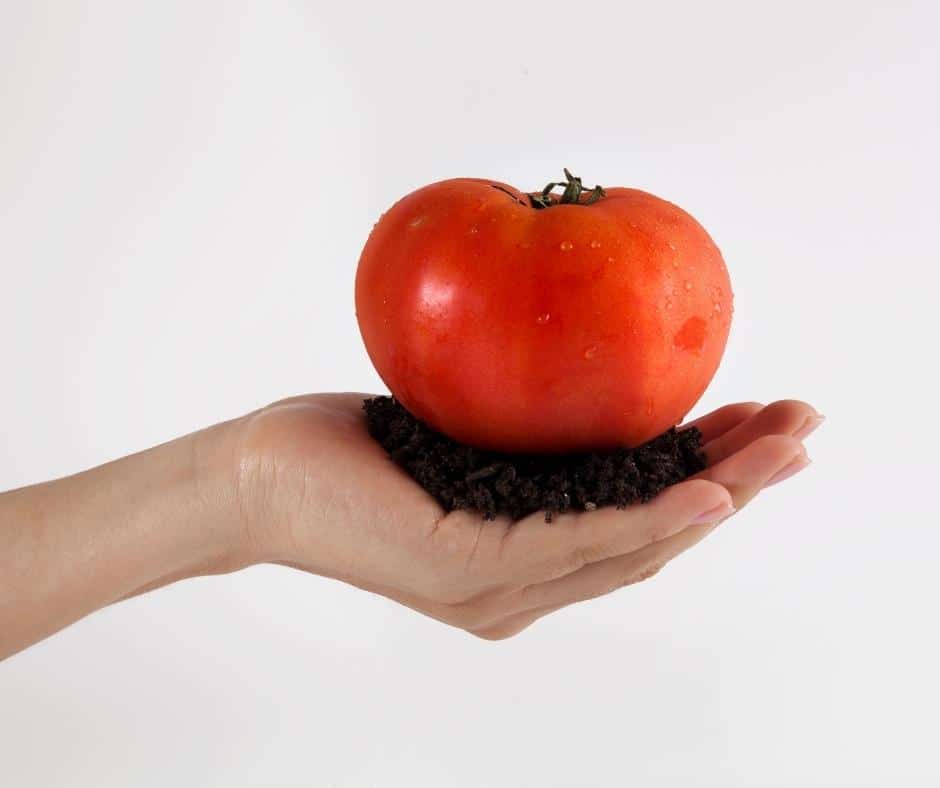
Make Your Own Soil for Tomatoes in Containers
The easiest approach to grow tomatoes is to create your own soil mix. To prepare your mix, thoroughly combine the following ingredients.
- 25% Topsoil from your garden
- 25% Perlite (helps keep the soil loose over time)
- 25% Coconut coir / Sphagnum peat moss (helps retain moisture for a long time)
- 25% Compost, Decomposed cow manure, or organic substance such as leaves, vegetable scraps, and the like (is a source of nutrition to the plants)
PRO TIP
If you’re using topsoil from your own garden, be sure it doesn’t contain a lot of clay. Soil with too much clay will cause the soil to compact over time, limiting root growth.
If your topsoil is excessively clay-rich, decrease its quantity and add more perlite and coco coir. Plus, before combining, loosen the soil and break any clumps.
NOTE
It’s critical to know that using garden dirt in your garden may be harmful since it may contain weed seeds, pests, larval eggs, fungi, and diseases.
Making your own soil mix might be simple and less expensive if you have the ingredients on hand, but if you don’t, good quality ready potting mix for tomatoes is recommended.
Buy Ready Potting Mix for Tomatoes
If you are looking to buy the best soil for tomatoes in the container I have listed the top potting mixes available in the market. Buying proven ready mixes is definitely a good idea
Soil Mix Overview
Foxfarm Soil Mix (Our Pick!)
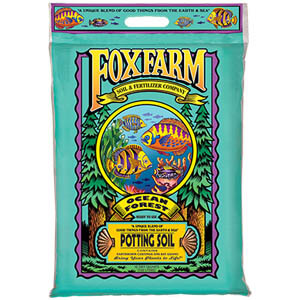
– Good things from earth & sea!
– Sandy loam, Earthworm castings, Bat guano
– Sea-going fish, Crab meal
– Forest humus, Sphagnum peat moss
– pH adjusted at 6.3 to 6.8
– Quantity: 2 x 12 Quarts- Alongside, you can use Foxfarm Big Bloom fertilizer for your tomatoes.
Black Gold Soil Mix
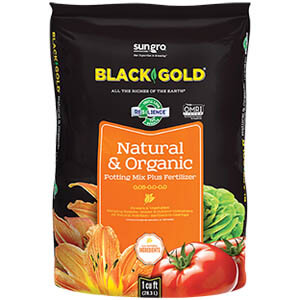
– Organic mix
– Sphagnum Peat Moss (Canadian), Composted Bark
– Earthworm Castings, Compost
– Pumice, or Cinders, Horticultural Grade Perlite
– Organic Grade Fertilizer
– RESiLIENCE (their trademark silicon-enriched additive)
– Quantity: 8 Quarts
MiracleGro Soil Alternative
(Soil Substitute)
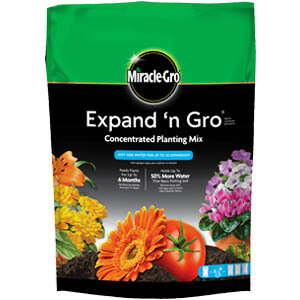
– Good substitute for soil
– Contains Coconut coir and fertilizer
– Grows 3 times bigger when water added
– Holds 50% more water than regular potting soil
– Can feed plants up to 6 months
– NPK: 0.45-0.15-0.3
– Quantiy: 0.33 cu ft (~8.4 dry Quarts)- Add equal part water and miracle-gro in a container, leave it for 10 minutes to expand
– Mix well in a large container so there is enough room for expansion
Espoma Organic Soil Mix
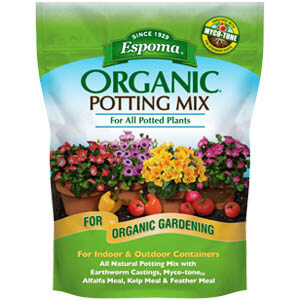
– Organic
– 35-45% sphagnum peat moss, Perlite
– Earthworm castings, Alfalfa meal, Kelp meal
– Feather meal, Yucca extract
– Materials from one or more of humus, aged forest products, composted rice hulls
– Limestone (to adjust pH)
– MYCO-TONE (promote root growth, increase water uptake, reduce drought stress)
FoxFarm Ocean Forest Mix is the best soil mix for growing tomatoes in containers, followed by Miracle-Gro All Purpose Soil. The majority of the soil mixes are high in nitrogen, with trace elements such as potassium being significant exceptions. When your plants begin to bloom, you may feed them with fertilizer.
5. Is it necessary to fertilize tomatoes?
Tomatoes are food vultures and require a lot of calories. You may provide extra nutrition to the plant if necessary.
When growing tomatoes in pots, a lot of nutrients escape with the water through the drainage hole. Taking that into account, it’s a good idea to fertilize the soil.
When should fertilizer be added to tomato plants in pots?
If you’re using fertilized potting soil, don’t give the young tomato plants any more fertilizer. Too much fertilizer might harm the young roots. After 2 weeks, apply nutrients again if necessary. To produce delicious healthy tomatoes, the plants will require a continuous supply of nutrients at this time.
What Is the Best Fertilizer for Tomatoes in Containers?
In comparison to nitrogen, the best fertilizer for tomatoes is rich in phosphorus and potassium. Tomato fertilizers with a higher PK value, such as NPK 5-10-10, are ideal. While leaf growth requires nitrogen, phosphorus is important for creating healthy blooms and fruits.
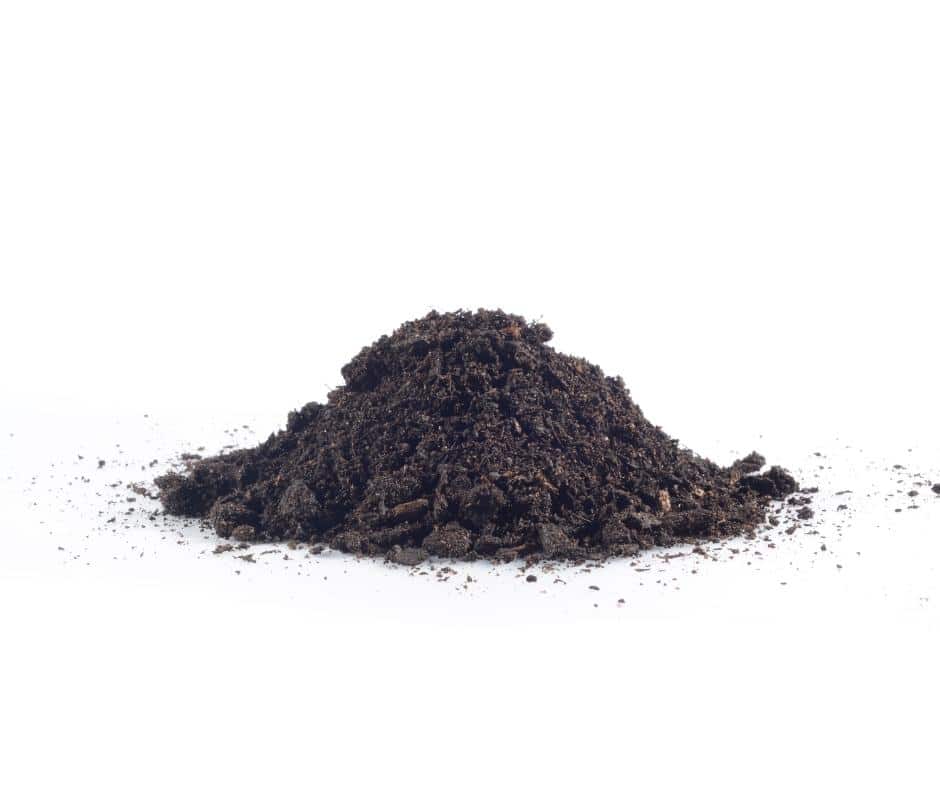
Frequently Asked Questions About Soil for Tomatoes
What is the best way to prepare the soil for tomatoes?
Break up any clumps, remove any twigs or rocks, add compost, add potassium and phosphorus-rich fertilizer, bone meal, neem cake which acts as a bug repellent, and fertilizer if necessary.
Is potting soil advisable for growing tomatoes?
Yes, you may use potting soil to plant tomatoes. The Foxfarm Ocean Soil mix is a good example.
Is it true that coffee grounds enhance the flavor of tomatoes?
Yes, coffee grounds can be utilized as a source of Nitrogen (N), however, do not use more than 15-20% in your soil mix. Tomatoes require more phosphorus (P) and potassium (K). Coffee power also helps to keep snails at bay.
Is it possible to use Epsom salt on tomatoes?
Yes, Epsom salt is mostly magnesium and sulfur-rich, which aids in the retention of plant foliage and higher yields.
What is the optimal amount of Epsom salt for tomatoes?
2 tbsp Epsom salt with 1 gallon of water may be used to drench a 2 feet tall tomato plant. You may either spray the leaves or pour it on the ground. This should be done once a month.
What type of fertilizer is ideal for tomatoes?
“Tomato Secret by Dr. JimZ” is one of the greatest tomato fertilizers available. “Dr. JimZ”
Is it possible to produce tomatoes in 5-gallon buckets?
Yes.
Is it possible to use banana peels on tomato plants?
Yes, banana peels are an excellent source of phosphorus and potassium, both of which are critical for producing healthy tomatoes. Before combining with the soil, dry the peels completely.
Is bone meal beneficial to tomato plants?
Yes. Bone meal is high in phosphorus and has calcium, both of which are essential for tomato plants. Mixing to the proper ratio for your soil will help strengthen stems and prevent blossom end rot.
Are Orange peels good for tomatoes?
Yes, orange peels are rich in Nitrogen (N), which aids foliage development. Break it down into small pieces so that it can compost safely and efficiently, and do not overdo it.
Are eggshells good for tomato plants?
Yes, eggshells are high in calcium and can help prevent blossom-end rot as well as produce tasty tomatoes. To your soil mix, grind your eggshells to a fine powder and apply it. Do not breathe in the powder of the eggshell, wear a face mask while grinding.
Are teabags good for tomatoes?
The majority of “bags” for tea are not biodegradable (contain plastic) and the contents of the bags, including the tea leaves, are rich in tomato fertilizer. Tea leaves are an excellent source of nitrogen and other minerals; it has an NPK of 4.15-0.62-0.4. Before combining it with your tomato soil, completely dry out the leaves.
I hope that this post has assisted you in selecting the appropriate soil and fertilizer for your tomato planting! With some attention, I believe you will be growing succulent, flavorful tomatoes in no time now that you’ve found the ideal container soil for tomatoes.
Final Thoughts
Wait till the tomatoes are fully ripe on the plant before harvesting and consuming them because that will provide you with the best-tasting tomatoes ever!
Soil is an essential component of gardening, and proper soil will help to ensure the success of your tomato plants. In this post, we have discussed some of the best soil amendments for tomatoes, including coffee grounds, Epsom salt, bone meal, eggshells, tea bags, and orange peels. We hope that you will find this information helpful in creating the perfect soil mix for your tomato plants. Happy Gardening!
